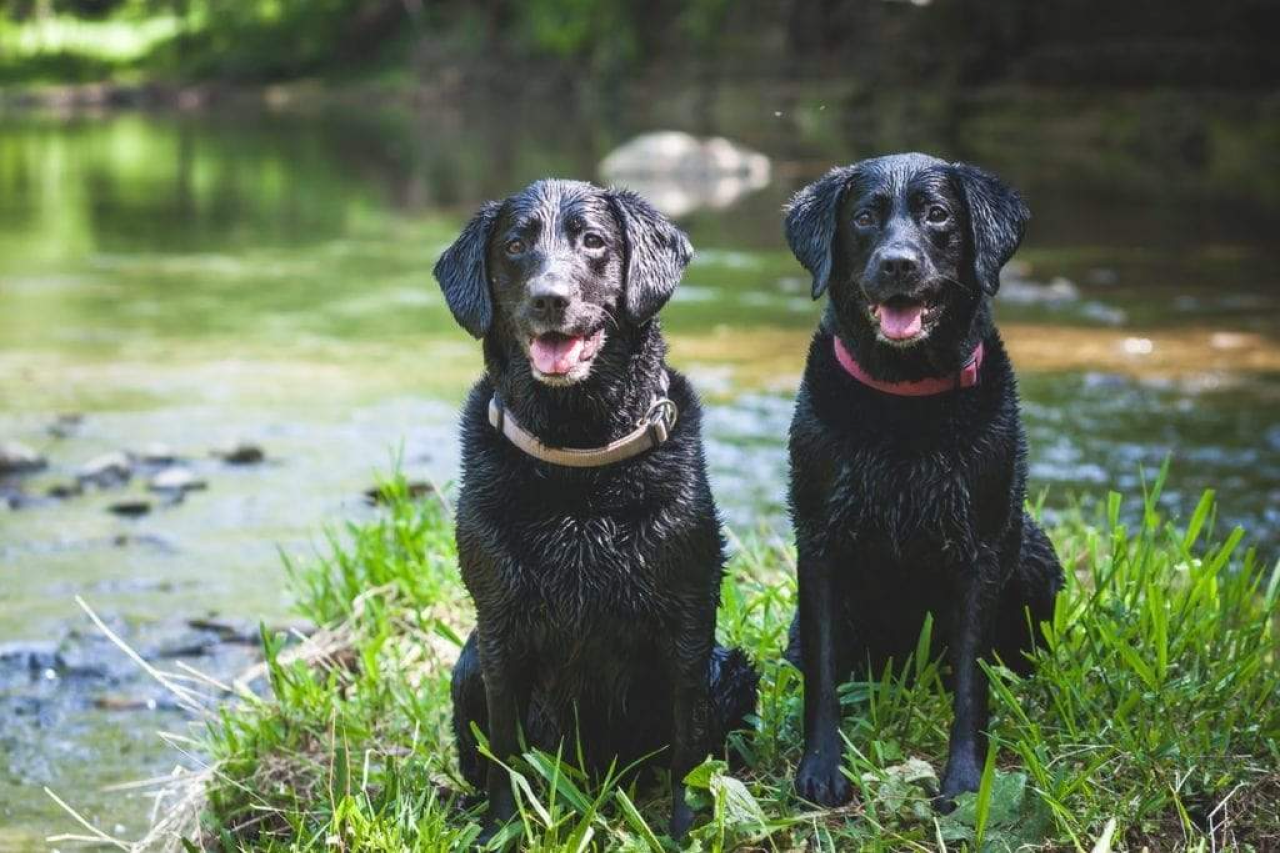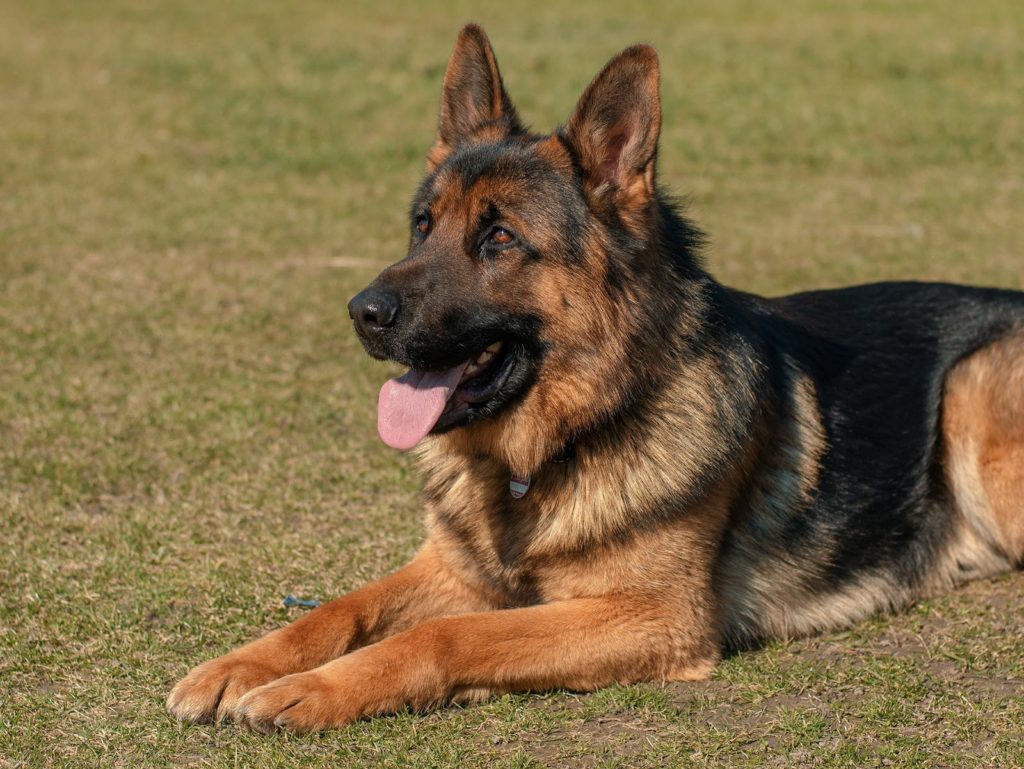
Do Dogs Sweat? How Your Canine Friend Cools Off
When you exert physical effort, your body produces sweat. As sweat on your skin evaporates, it helps cool your body down. It's a natural part of life for humans, but what about our canine companions? How exactly do dogs cool themselves off, especially in hot weather? Do dogs sweat the way humans do?
It turns out that the answer to if dogs sweat isn't as simple as a "yes" or "no." Dogs do actually have sweat glands, but they don't sweat the same way humans do. Understanding your canine friend's perspiration will help you make sure your dog stays cool and healthy, especially during the hot summer months and when your dog is exercising.
How Dogs Cool Themselves Down
The human body only has one way of cooling itself down: Sweating. Dogs, it turns out, have multiple different methods of cooling themselves down.
Panting
Panting is your dog's primary way of cooling off. When a dog pants, they start to evaporate moisture from their tongues, as well as the nasal passages and the lining of the lungs. When the air produced by panting passes over these moist tissues, your dog is cooled. In the same way that the human body uses evaporation to cool itself down via sweating, your dog's body uses this moisture evaporation technique through the process of panting.
Sweat Glands
While your dog doesn't sweat through the skin the way humans do, he or she does have sweat glands on the body. There are two types of sweat glands in dogs:
- Merocrine glands — Merocrine sweat glands are located in your dog's paw pads, because sweat wouldn't evaporate from your dog's body thanks to the fur. The sweat glands in the foot pads ensure the sweat evaporates effectively. The merocrine glands function in a similar way to human sweat glands — when your dog's internal temperature rises, the glands start producing sweat to cool your pooch off.
- Apocrine glands — Apocrine sweat glands are located all over your dog's body. The substance they release doesn't help to regulate body temperature, though. These glands release pheromones that help dogs identify one another.
Vasodilation
The third way that dogs cool themselves down is by a process called vasodilation. Vasodilation simply means the expansion, or dilation, of blood vessels. When your dog gets hot, blood vessels (mostly in the face and ears) expand and bring warm blood closer to the surface of the skin, where it cools down. Then, that cooler blood cycles back to the heart. This process helps to regulate your dog's internal temperature. Vasodilation is the reason that you may notice your dog's face has a flushed, slightly wrinkled appearance when he or she is hot.
Overheating in Dogs

You might think that since dogs have three ways to cool themselves off when it's hot outside, they're at a lower risk for overheating. This isn't true. Panting, vasodilation, and sweating through the merocrine glands in the paw pads are simply not as effective for helping dogs cool off as sweating is for humans. Overheating can take several forms in dogs, ranging in severity from heat stress to heat exhaustion and — most severe of all — heat stroke.
What Causes Heat Stroke In Dogs?
There are many potential causes of heat stroke. Leaving your dog outdoors in a hot, humid environment can lead to heat stroke in a very short amount of time. Not providing adequate shade and cool water when Fido is outside is another. Leaving a dog in a hot car on a summer's day is one of the leading causes of heat stroke in dogs.
Even on days that are relatively mild, the temperature inside a car parked in the sun can skyrocket quickly, reaching well over 100 degrees Fahrenheit in just a few minutes. Since the dog has no way to escape the heat, the internal body temperature rises quickly and can easily lead to heat stroke.
It's important to recognize that certain dog breeds are more prone to heat stroke than others. Brachycephalic breeds — those with squashed faces and bulging eyes like the pug, Pekingese, Shih Tzu, and the English and French bulldog — are at a particular risk thanks to their unique anatomy, which can make breathing difficult. Older dogs and dogs that are overweight are also at an increased risk for heat stress, heat exhaustion, and heat stroke.
The Signs of Heat Stroke In Dogs
Dog owners should pay close attention to their pups while they're exercising, especially on hot days, so that heat stroke can be recognized quickly and dealt with immediately. The signs of heat stroke include:
- Excessive heavy panting
- Excessive drooling, often with thick, rope-like saliva
- Red gums
- Rapid heart rate
- Muscle tremors
- Loss of coordination
- Seizures
- Collapse
If you see these signs in your dog, get them out of the hot environment right away. Your goal is to lower the level of body heat — put your dog in the bathtub and run cool water over the body, taking care to avoid the eyes and nose. While you're doing this, call your veterinarian's office to find out how to proceed.

How to Keep Your Dog Cool
We've seen that dogs aren't incredibly efficient at cooling themselves off, and that many types of dogs are at risk for overheating. So, what can pet owners do to make sure their canine friends stay cool during hot weather?
Fresh Water
The first rule of thumb for keeping your dog cool in hot weather: Provide him or her with plenty of fresh, cool water to drink at all times. Water serves as the body's internal temperature regulator and is especially important on extremely hot, humid days. Make sure your dog has water to drink whether he or she is spending time indoors or out.
Indoor Time
Your dog may enjoy lounging in the sun on a hot summer's day, but leaving your dog outside for too long is a quick path to heat stroke. Make sure to bring your canine companion indoors frequently, where it's air conditioned and comfortable. As a general rule, don't let your pooch stay outdoors for longer than about 15 or 20 minutes at a time when it's hot outside. While you have your pet inside, run a brush through your dog's coat. This removes loose fur to thin out the coat, which helps to keep your pooch a bit cooler. Never shave your dog in the summer, though — this might remove your dog's important insulating layer of fur and make them more susceptible to sunburn.
Exercise Tips
Don't over-exercise your dog when it's hot outside, especially if they're overweight or brachycephalic. Try exercising your pooch in the morning or evening hours, when temperatures are a bit lower, rather than in the middle of the day. A final tip: Never leave your dog inside of a car on a hot day, even if it's parked in the shade and the windows are cracked. Either bring your dog indoors at your destination or leave them at home in the comfy air conditioning.
Learn about our Vegan Protein Dog Food and our Skin & Coat Dog Supplements to help provide your dog with all of the nutrients they need to thrive.
Take Care of Your Dog In The Heat
As you're spending time with your beloved pet this summer, keep in mind that your dog doesn't sweat to cool down in the same way that you do. As long as you keep exposure to heat and humidity to a minimum, provide plenty of fresh water, and remember to watch for the telltale signs of overheating, your dog will be fine.




























